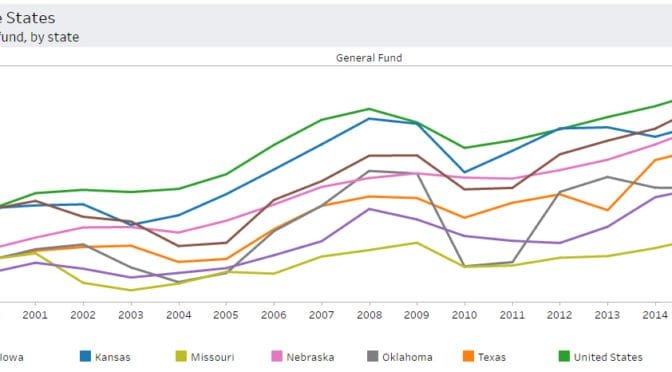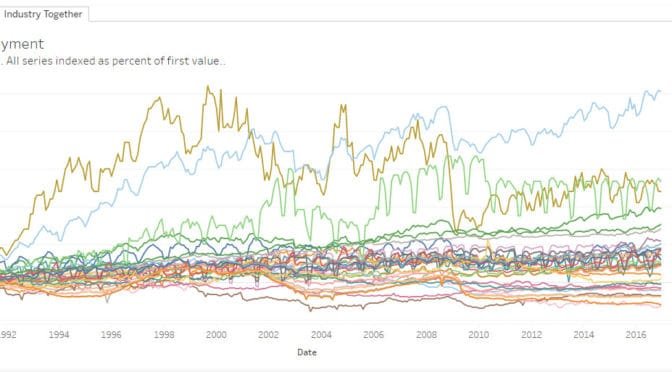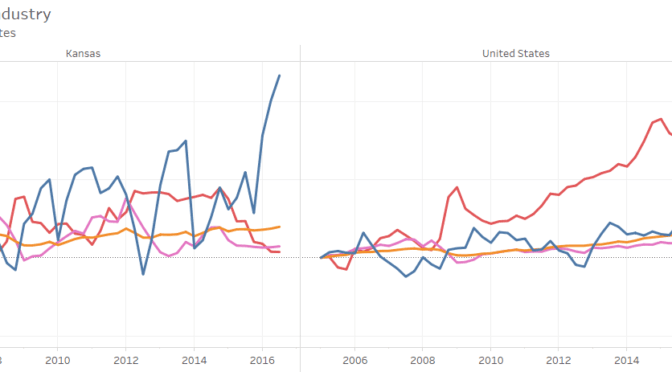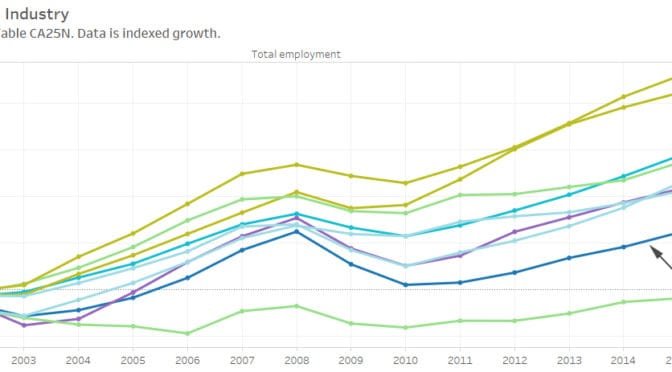Tag: Economics
-

Kansas employment by industry
An interactive visualization of Kansas employment by industry.
-

Spending in the states, by fund
The National Association of State Budget Officers publishes spending data for the states. In this interactive visualization, I present the data in a graphical and flexible format.
-

Wichita metro employment by industry
An interactive visualization of Wichita-area employment by industry.
-

GDP by state and industry
An interactive visualization of GDP for each state, by industry.
-

Analysis of proposed tax changes in Kansas
Proposed changes in the Kansas motor fuel tax and sales tax on groceries affects households in different ways.
-

Employment by MSA and industry
An interactive visualization of employment in metropolitan areas.
-

Understanding job growth and the Kansas tax reforms
Commissioned by Kansas Policy Institute and written by researchers from Arizona State University, a new report looks at the Kansas economy after the tax reforms passed in 2012.
-

Year in Review: 2016
Here are highlights from Voice for Liberty for 2016. Was it a good year for the principles of individual liberty, limited government, economic freedom, and free markets in Wichita and Kansas?
-

Economic development incentives at the margin
The evaluation of economic development incentives in Wichita and Kansas requires thinking at the margin, not the entirety.
-

Kansas benefits from foreign trade
The Kansas economy benefits greatly from foreign trade, and we should oppose restrictions on trade, writes Bryan Riley of Heritage Foundation.

